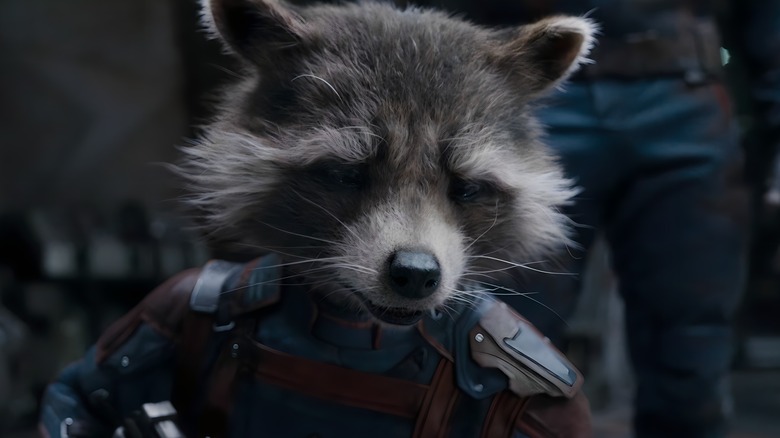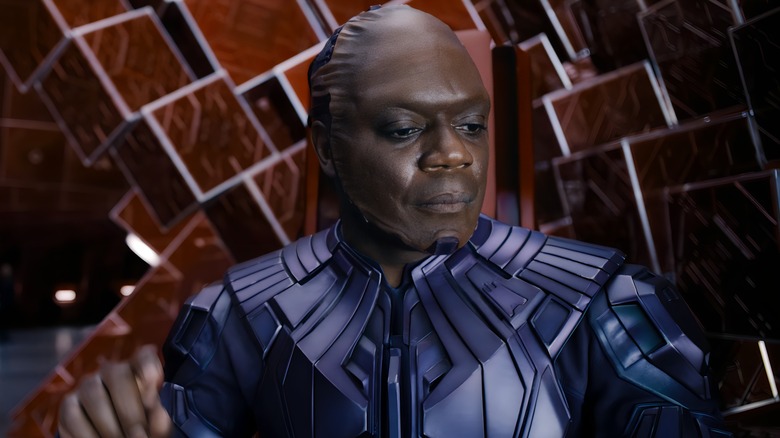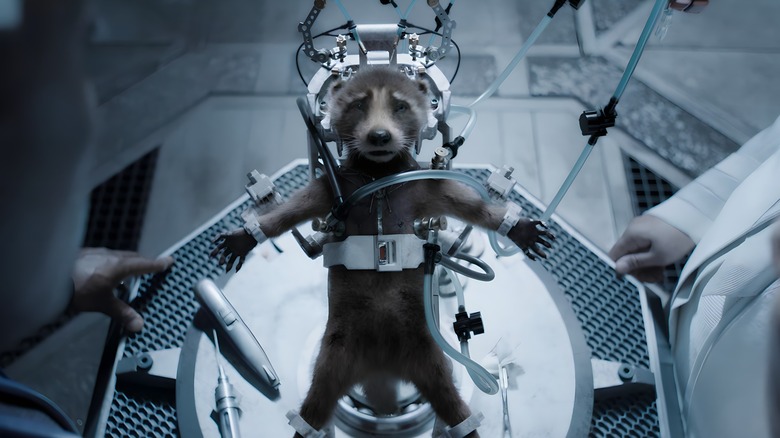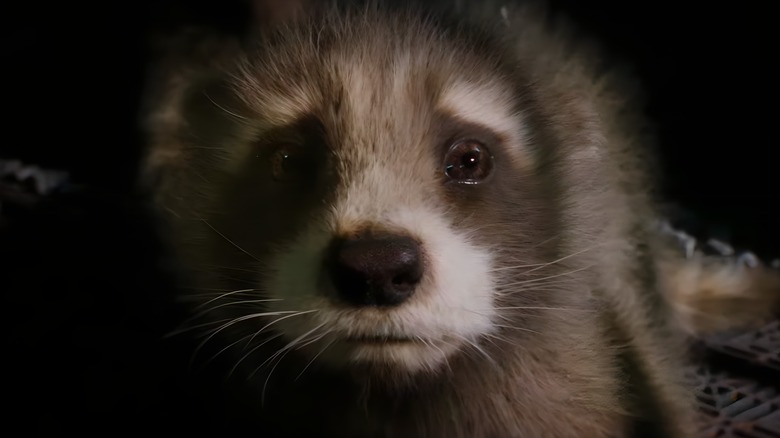Guardians 3: Is The Film's Depiction Of Animal Abuse Too Brutal?
Contains spoilers for "Guardians of the Galaxy Vol. 3"
"Guardians of the Galaxy Vol. 3" is an atypical Marvel Cinematic Universe movie in many ways, but its sheer brutality stands out in particular. James Gunn brings a whole bunch of his old Troma accolades into the movie in a way that makes it a far cry from your average fun family superhero romp. What other MCU film could feature a lengthy sequence of a central protagonist clawing someone's face off, and actually show the end result of the attack later down the line? What other tentpole adventure film would dare feature the many gruesome results of the High Evolutionary's (Chukwudi Iwuji) animal experiments so prominently?
Of course, creative choices like that come at a price. You should absolutely be prepared for the fact that "Guardians of the Galaxy Vol. 3" features several disturbing scenes of animal abuse and death, to the point that it may be easy to start wondering whether the movie takes its depictions of animal cruelty too far. Let's take a look at why the movie gets so graphic, and whether it's simply too much.
The film sides with the animals and rightly vilifies their abuser
Yes, it's pretty horrifying to see Floor (Mikaela Hoover), a cute bunny rabbit that has been inexplicably equipped with mechanical spider legs and a muzzle to go with her improved intellect. Yes, seeing the wheels and eye contraptions of Teefs (Asim Chaudry) or the mechanical arms of Lylla (Linda Cardellini) can be disconcerting. That being said, the horror lies largely in their character design, and apart from Rocket's initial pain, the other Batch 89 members seem to be largely unbothered by their extensive modifications. They're a friendly, positive, and optimistic bunch right until the very end — and if Rocket's cardiac arrest vision is any indication, the fun very much continues beyond the veil. What's more, Rocket and his team later go out of their way to rescue every single animal from the High Evolutionary's doomed ship, so the movie's overall tone is very pro-animal across the board. It's the movie's antagonist who isn't.
Apart from the obligatory friendship, one of the film's most obvious central themes is that it takes a truly vile person to torment animals. The High Evolutionary is one of the very few MCU villains who have no redeeming features whatsoever. He's a cruel and ruthless man who devotes every single moment of his waking life to playing god. He cares so little about others that he treats his creations as wholly disposable intellectual property, and openly mocks Rocket during the worst moment of the young raccoon's life. This villain isn't just a bad guy — he's the worst guy.
As such, graphic as Batch 89's modifications may be, it's completely clear that only a civilization-destroying madman like the High Evolutionary would do such things to them and his other experiments. As a result, "Guardians of the Galaxy Vol. 3" isn't so much a movie that features animal abuse as it is a passionate commentary against animal abuse.
Rocket's backstory dictates the plot's more brutal moments
One of the biggest things we learn about Rocket in the first "Guardians of the Galaxy" movie is that he has heavy cybernetic and genetic modifications from his past as a lab experiment of some sort. The hows and whys of his past don't really come into play until "Vol. 3," but from his very first appearance, it's clear that something truly horrifying happened to him, and the ensuing trauma and self-image issues are integral building blocks of the character.
Because of this, it's been clear since 2014 that Rocket's past is excruciatingly horrifying, and that with the possible exception of Nebula (Karen Gillan), no other Guardian has gone through more sheer physical abuse in their past. That's close to a decade of MCU fans quietly wondering what the character went through, so "Vol. 3" had to surpass years of fan imagination in order to make Rocket's backstory adequately tragic. It's fair to say that "Vol. 3" accomplishes this mission with gut-wrenching success, to the point that Nebula herself admits that Rocket's gone through far worse than she has when she gets a chance to watch a recording of one of the High Evolutionary's operations.
James Gunn was always aware of the fine line the movie has to walk
"Guardians of the Galaxy Vol. 3" is rarely afraid of showing what the story requires, even when this means that bad things need to be on screen. However, don't take this to mean that James Gunn didn't carefully consider what should and shouldn't be shown. On the contrary, he took some pains to make sure that the animals — who are CGI, of course — were presented as tactfully as the subject matter allowed.
"I was very, very careful about what we see in terms of animals being hurt because it is something I'm incredibly squeamish about, and people are squeamish about," Gunn said in an interview with Collider. "So I think the difficult stuff to watch in the movie — and there is some difficult stuff at times — is because of the idea of what's happening more than what you actually see. You don't see very much, in terms of violence or harm to animals, but you do see these little animals, the results of which are not the most beautiful, but somehow they're extraordinarily cute."
It is, of course, ultimately up to the viewer to decide whether the High Evolutionary's animal cruelty is too much for them to swallow, CGI critters or not. However, when you consider the requirements of Rocket's story and the movie's ultimately positive message, it's pretty clear that the movie isn't taking things too far.



